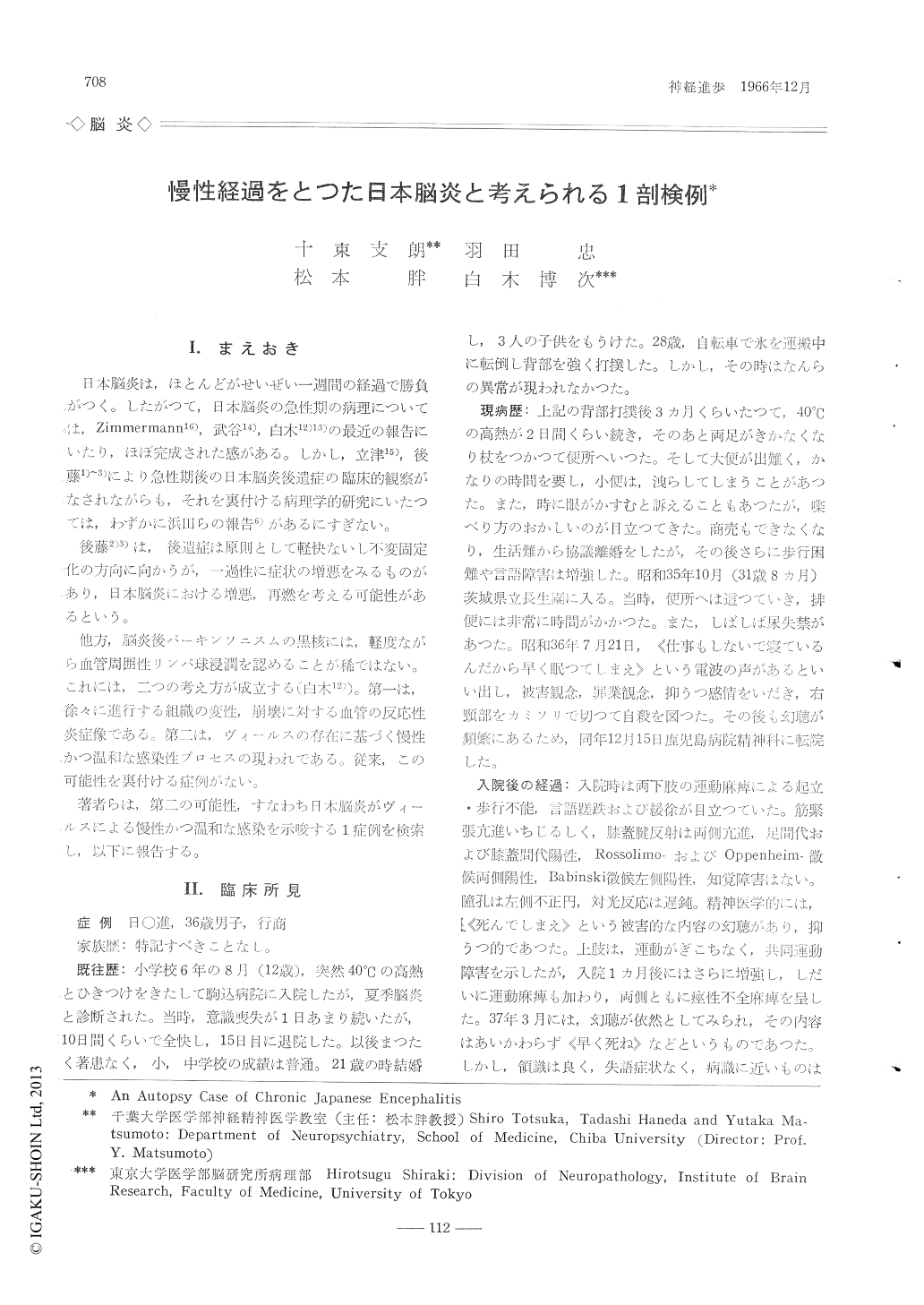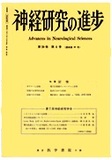Japanese
English
- 有料閲覧
- Abstract 文献概要
- 1ページ目 Look Inside
I.まえおき
日本脳炎は,ほとんどがせいぜい一週間の経過で勝負がつく。したがつて,日本脳炎の急性期の病理については,Zimmermann16),武谷14),白木12)13)の最近の報告にいたり,ほぼ完成された感がある。しかし,立津15),後藤1)〜3)により急性期後遺脳炎後遺症の臨床的観察がなされながらも,それを裏付ける病理学的研究にいたつては,わずかに浜田らの報告6)があるにすぎない。
後藤2)3)は,後遺症は原則として軽快ないし不変固定化の方向に向かうが,一過性に症状の増悪をみるものがあり,日本脳炎における増悪,再燃を考える可能性があるという。
The patient, 36-year-old male, had showed paresis on both legs, difficulty in urination and defecation and impaired speech after high fever lasting for 2 days at the age of 28. Thereafter he developed psychotic symptoms such as audi-tory hallucination and depressive state, while disturbance of coordination, paresis on upper limbs, muscular rigidity, forced laughing and weaping and nystagmus progressed.
In the terminal stage, he showed disorientated state and athetoid movement. 7 and 1/2 years after the onset of illness he expired (Fig. 1).
Pathoanatomically, the lesions were dissemi-nated throughout the central nervous system, especially in cerebellum, brain stem, thalamic nuclei, Ammon's horn and the cortices of tem-poral and frontal lobes (Fig. 2). The histologi-cal findings were as follows numerous glial nodules, diffuse proliferation of both micro-and macroglial cells, slight to moderate deterioration of nerve cells, occasionally two nucleic nerve cells, neuronophagy and perivascular lympho-cytic infiltrations (Fig. 3-13).
Above-mentioned findings were briefly discus-sed in special references to some viral encepha-litides of similar type from clinico-pathological view point. The authors concluded that the present case was presumably an unusual case of Japanese encephalitis with chronic course.

Copyright © 1966, Igaku-Shoin Ltd. All rights reserved.


